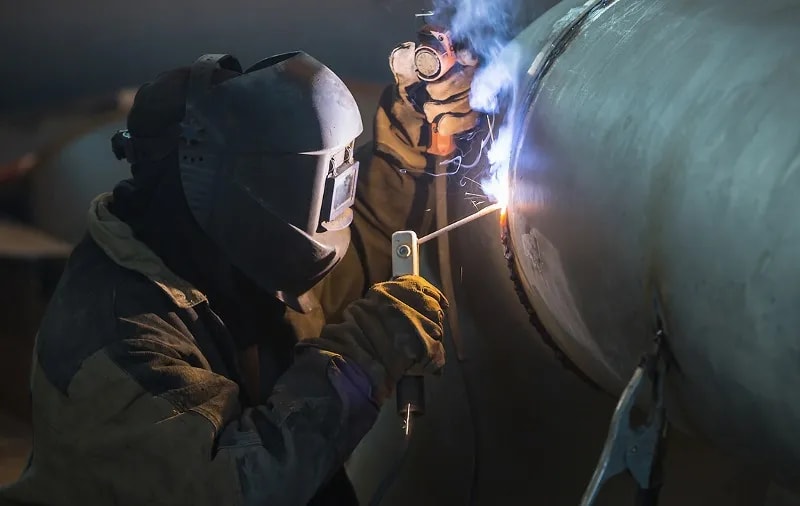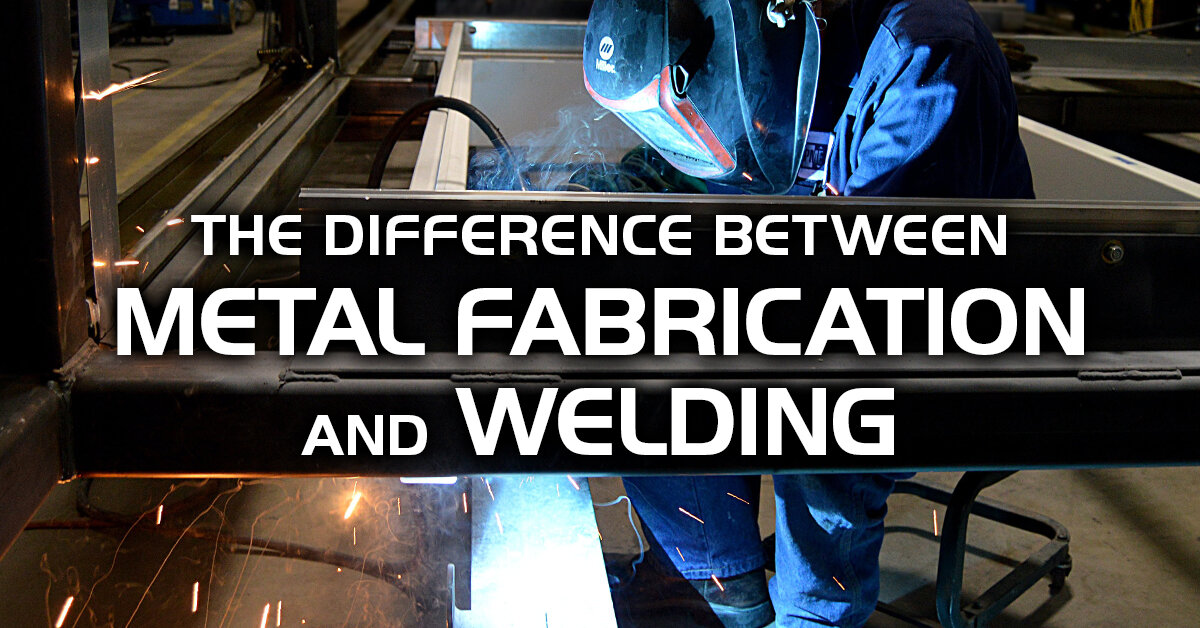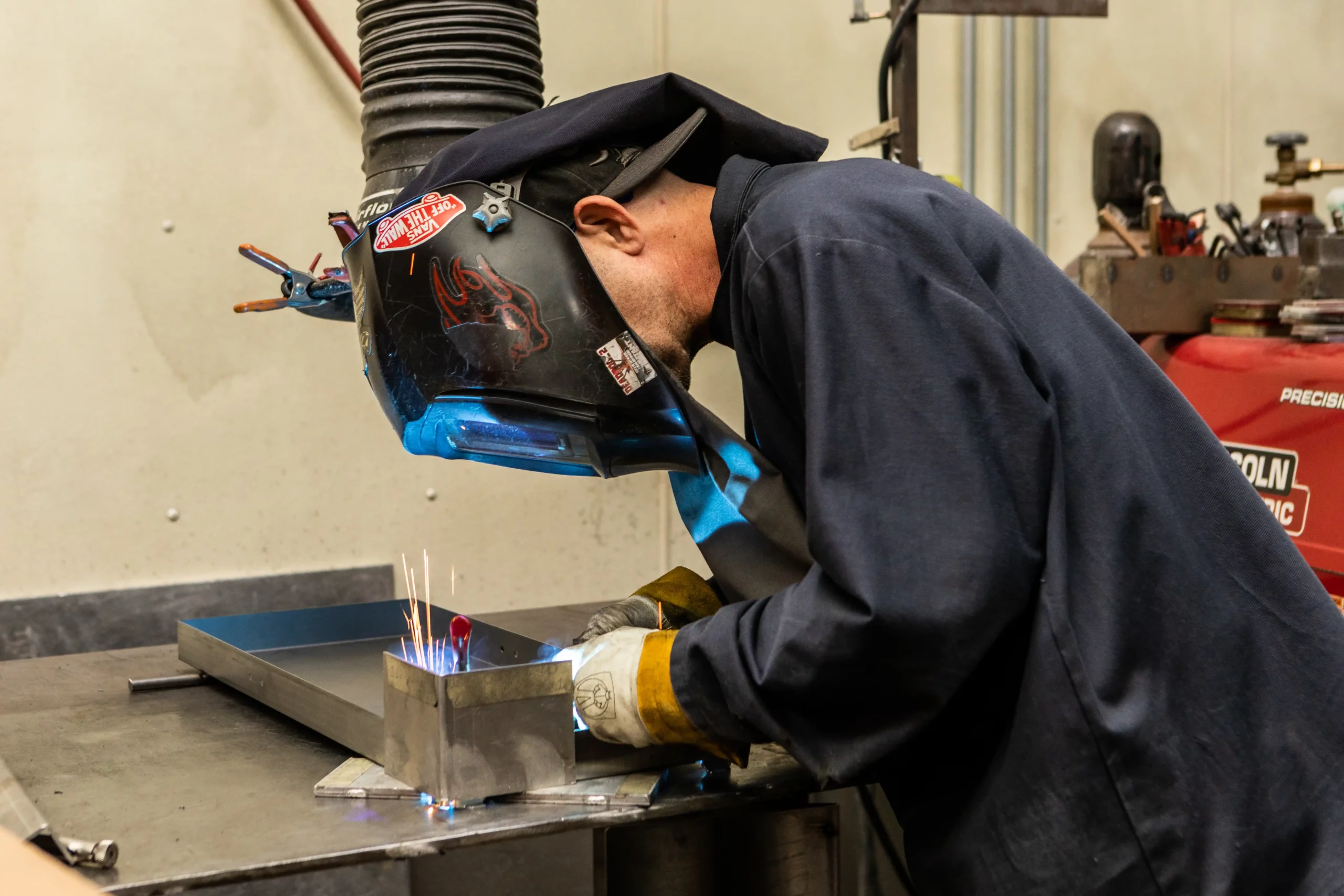Usual Welding Repair Work Issues and Just How to Address Them Effectively
Welding repair services often come across a variety of problems that can threaten the integrity of the end product. Typical issues include inadequate penetration, porosity, and misalignment, amongst others. Each issue offers unique difficulties that require specific approaches for resolution. Understanding these issues is necessary for welders intending to improve their skills and end results. This discussion will certainly explore these common welding repair work problems and effective methods to address them.
Inadequate Infiltration
Inadequate infiltration takes place when the weld steel stops working to completely fuse with the base material, resulting in weak joints and potential architectural failings. This problem frequently stems from not enough warm input, inaccurate electrode angle, or improper welding rate. Welders may experience insufficient penetration because of a mistake of the essential specifications for a certain material thickness or kind. Additionally, contamination on the base product's surface can impede effective bonding, aggravating the problem. To deal with poor infiltration, welders must guarantee appropriate setups on their devices and preserve a tidy job surface area. Routine inspection of welds is recommended to determine any kind of deficiencies early, permitting for prompt corrections and the avoidance of compromised architectural honesty in welded settings up.
Porosity
Porosity is a typical defect in welded joints that shows up as small gas bubbles caught within the weld steel. This defect can jeopardize the stability of the weld, resulting in lowered stamina and potential failure under anxiety. Montana Mobile Welding and Repair Belgrade Fabrication. Porosity typically develops from contamination, moisture, or inappropriate welding techniques, which permit gases to get away right into the liquified weld swimming pool. To address porosity, welders need to assure correct surface area preparation, preserve a clean workplace, and utilize appropriate welding criteria. In addition, picking the right filler material and shielding gas can reduce gas entrapment. Regular assessment and screening of welds can aid recognize porosity early, guaranteeing timely rehabilitative activities are taken, consequently maintaining the top quality and reliability of the bonded framework
Imbalance
Imbalance in welding can arise from various aspects, consisting of inappropriate configuration and thermal expansion. Understanding the origin causes is vital for reliable resolution. A number of improvement strategies are readily available to straighten components and assure architectural honesty.
Causes of Imbalance
Welding imbalance usually stems from a variety of underlying issues that can compromise architectural integrity. One key cause is improper fit-up of components prior to welding, which can bring about spaces and irregular surfaces. Variations in thermal development throughout the welding process can additionally cause distortion, especially if the products being signed up with have different coefficients of development. Furthermore, inadequate fixturing and clamping may fail to hold elements securely in position, causing movement during welding. Poorly kept tools, including welding equipments and tools, might present disparities in the weld grain, additional contributing to imbalance. Operator mistake, stemming from inadequate training or experience, can additionally play a significant duty in creating misaligned welds.

Adjustment Techniques Available
Dealing with misalignment efficiently requires a combination of restorative techniques tailored to the particular problems handy. One typical technique is the use of fixtures or jigs to hold elements in the appropriate placement throughout welding, making certain regular placement. Furthermore, pre-heating the materials can help in reducing distortion and improve fit-up. For significant misalignment, mechanical adjustment methods, such as utilizing hydraulic jacks or clamps, can be utilized to deal with the setting before welding. Post-weld warmth therapy might likewise be required to eliminate anxieties created by misalignment. Lastly, cautious examination and change throughout the configuration stage can avoid imbalance problems from becoming substantial troubles, promoting a smoother welding procedure and improving overall architectural honesty.
Distortion
Distortion is an usual challenge in welding that can arise from different factors, consisting of uneven heating & cooling. Understanding the sources of distortion is essential for carrying out efficient avoidance strategies. Resolving this concern not only enhances structural honesty but likewise enhances the overall high quality of the weld.
Reasons of Distortion
When based on the extreme warmth of welding, materials usually undergo modifications that can bring about distortion. This phenomenon largely arises from thermal expansion and tightening during the welding procedure. As the weld location heats up, the product increases; upon air conditioning, it gets, which can develop inner tensions. Furthermore, unequal heating across a workpiece can worsen these stresses, causing bending or flexing. The kind of material likewise plays a substantial function; metals with differing thermal conductivity and coefficients of expansion may react in a different way, leading to uncertain distortions. Poor joint style and inadequate fixturing can add to misalignment throughout welding, enhancing the chance of distortion. Understanding these causes is necessary for effective welding repair service and avoidance methods.
Prevention Techniques
Effective prevention strategies for distortion during welding focus on controlling warm input and making certain appropriate joint layout. Maintaining a constant heat input aids to lessen thermal development and tightening, which can cause distortion. Using techniques such as pre-heating the workpiece can additionally reduce the temperature slope, advertising consistent home heating. In addition, picking proper joint layouts, such as T-joints or lap joints, can boost security and minimize stress and anxiety focus. Carrying out correct fixturing to protect the work surfaces in area additionally aids in keeping positioning throughout the welding procedure. Staggered welding series can distribute heat extra equally, protecting against localized distortion. By using these techniques, welders can greatly reduce the probability of distortion and improve the general welding fabrication shops near me quality of their welds.
Fracturing
Splitting is a common concern come across in welding repair work, commonly resulting from various variables such as inappropriate air conditioning rates, product choice, or inadequate joint preparation. The incident of splits can substantially endanger the honesty of the weld, resulting in prospective failings throughout operation. To address this problem, welders have to initially examine the origin, making certain that materials work and suitably chosen for the certain application. Furthermore, controlling the air conditioning rate during the welding process is crucial; rapid cooling can cause tension and result in breaking. Appropriate joint layout and preparation additionally add to decreasing the risk. Executing these strategies can boost weld quality and resilience, inevitably minimizing the probability of cracking in ended up weldments.

Insufficient Combination
A significant problem in welding repairs is incomplete combination, which occurs when the weld steel does not appropriately bond with the base material or previous weld passes - Montana Mobile Welding and Repair Belgrade Welding. This flaw can cause weak points in the joint, possibly jeopardizing the honesty of the bonded framework. Variables adding to insufficient fusion consist of insufficient warm input, improper welding strategy, and contamination of the surfaces being joined. To address this issue efficiently, welders should ensure correct pre-weld cleansing and surface preparation, as well as change their welding criteria to accomplish sufficient penetration and fusion. Normal examination throughout the welding procedure can also help identify incomplete combination early, enabling for prompt rehabilitative actions to enhance the overall high quality of the weld
Overheating
While welding fixings can improve architectural integrity, overheating offers a significant challenge that can result in material deterioration. Extreme warm throughout welding can alter the mechanical residential properties of metals, resulting in decreased stamina, raised brittleness, and bending. This sensation is especially important in high-stress applications where architectural dependability is critical. Identifying overheating can involve aesthetic examinations for discoloration or distortion, in addition to monitoring temperature level during the welding process. To minimize the risks linked with overheating, welders should use appropriate methods, such as regulating heat input, changing travel rate, and making use of appropriate filler materials. Furthermore, implementing pre- and post-weld warmth treatments can aid bring back material homes and enhance the general quality of the fixing, making sure long-lasting efficiency and safety.
Regularly Asked Concerns
What Are the Common Indicators of a Welding Flaw?

Exactly How Can I Check My Welds for High quality?
To check welds for top quality, one can use aesthetic evaluations, ultrasonic testing, and radiographic methods. Each technique guarantees structural integrity, identifies defects, and verifies adherence to defined criteria, inevitably enhancing the reliability of the welded joints.
What Safety Safety Measures Should I Take While Welding?
When welding, one should prioritize safety and security by wearing proper individual safety tools, guaranteeing appropriate air flow, safeguarding combustible materials away, maintaining a clean work area, and being conscious of surroundings to stop crashes and injuries.
Can I Repair a Weld Without Remodeling the Entire Joint?
Repairing a weld without remodeling the entire joint is feasible, depending on the damages (Belgrade Welding). Techniques such as grinding, adding filler product, or making use of a welding process can efficiently resolve details welding rotator problems while maintaining the surrounding framework
What Devices Are Crucial for Efficient Welding Services?
Necessary tools for effective welding repair work include a welding equipment, wire brush, grinder, safety equipment, clamps, and filler materials. Each tool plays a vital duty in guaranteeing top quality and safety and security throughout the repair procedure. Porosity generally develops from contamination, moisture, or incorrect welding strategies, which permit gases to escape right into the liquified weld swimming pool. Badly conserved devices, including welding equipments and tools, might present variances in the weld bead, more adding to misalignment. When subjected to the intense warmth of welding, products usually go through modifications that can lead to distortion. Splitting is an usual problem come across in welding repair services, usually resulting from various elements such as incorrect cooling prices, product selection, or inadequate joint prep work. A considerable problem in welding repairs is insufficient blend, which happens when the weld steel does not sufficiently bond with the base product or previous weld passes.
Comments on “Common problems explained and solved by Montana Mobile Welding and Repair Belgrade Fabrication”